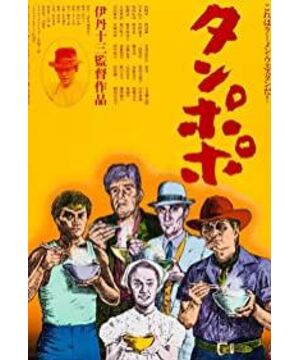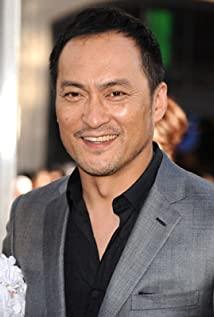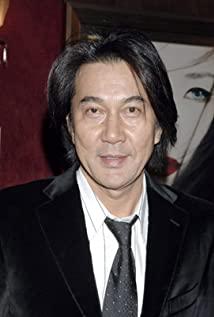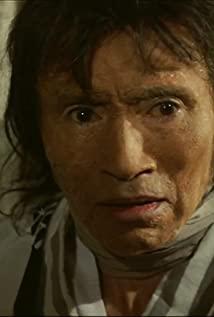beautiful Japanese sinful painter: "Foreign Person" Itami Thirteen
/Not necessarily a donkey and donkey December 2005
"Foreign Person": Different Ordinary people. Excellent people. The post-editor of "Tsubaki Saying Bow and Zhangyue" states that "every time the emperor reigns in our country, there will be a stranger." During his contact with Itami Shisan, Sima Ryotaro deeply felt that he was a stranger... ——In the essays and novels of Oe Kensaburo's
"Alien"
, his mentally retarded son Hikaru and Ai often appeared proudly Wife Yukari, Hikari's uncle, Yukari's elder brother, and Itami Thirteen, who is enveloped in the glory of "foreign people".
Oe Kensaburo’s autobiographical novel "The Kid Who Was Stolen", tells the story of the writer "Gu Yi Ren" looking for the truth about his wife and brother "My Liang" who is a film director--the beautiful baby was secretly exchanged by the dwarf goblin The story of walking. The prototype of this story comes from the fact that he had to face Itami thirteen to commit suicide by jumping from a building on December 20, 1997.
Reading "The History of Japanese Cinema" in the early years, Chapter 5, Section 12, Mr. Iwasaki sighed with regret at the two period drama wizards who died young, "Although they left a very high honor after their death, but if they don’t If you die early, you will undoubtedly produce even better works." "I died without a chance to show off my talents."-They are Sadao Yamanaka and Mansaku Itami.
Iwasaki Chang’s words left me with a deep impression about Itami Mansaku: (1) Itami Mansaku initially made a living by drawing illustrations. Under the introduction of his middle school friend Daisuke Ito, he joined Nikkatsu and became a screenwriter. Later, he became a writer. Excellent guide; (2), he is a conscientious intellectual, an upright, anti-war "socialist" director. His works are characterized by expressing rationality through ridicule and humor, with a bitter disillusionment color; (3) Itami Mansaku is good at writing prose and essays, he is a nihilist, a personal humanitarian, this kind of thinking Also subject to sensible constraints at all times.
Iwasaki Chang’s summary of his views on the art of life, I did not have the chance to witness it in the image, but in his son Itami Thirteen, I have to lament the magic of DNA genetics that seems like a reincarnation: Itami Mansaku could not finish. His artistic path was inherited by Itami Thirteen-
1. The story of Itami Thirteen The
painting talent and literary talent of Itami Mansaku were passed on to Itami Thirteen and his daughter Yukari (illustration in a publication by Oe Kensaburo) , All from her hands). Itami XIII has studied psychology, and he is an essayist besides being a filmmaker. He dumped on Kishida Hide’s "Fantasy Theory", published many essays, and also interacted with scholars who studied Freud and Lacan. He published books together, and Oe Kensaburo highly praised him. He said: Itami's essays truly reflect his personality. The most interesting and beneficial to society in his articles are various types of interview records. This seems to be the long and tortuous road he has experienced before becoming a film director.
Itami Mansaku's wise and honest personality charm is also clearly reflected in Itami XIII. The ideological values and artistic style of Itami Thirteen can even be compared with the commentary of Itami Mansaku by Chang Iwasaki above. Like his father, he is committed to criticizing current abuses and exposing social insider. Compared with the disguise of his father's use of bantering epoch dramas, Itami XIII is just the right time to use the form of a life comedy: presenting life in a humorous atmosphere, ridiculing world injustice in a relaxed mood. He is an artist with a conscience, he is a brave and wise warrior of civilization.
Itami Thirteen, formerly known as Ikeuchi Yoshihiro, was born on May 15, 1933. His father Mansaku Itami passed away when he was 13 years old. His high school life was spent in Matsuyama City, Ehime Prefecture. Oe Kensaburo met in his sophomore year. Classmates and close friends. Itami dropped out of school and later wanted to return to school, but was turned away by the original head teacher and music teacher. It was Da Jiang who accompanied him to find a teacher. Da Jiang later recalled: I went to see the teacher with him, and he didn't state the reason at all, but I impassionedly defended him. Then, he called my name and said: "Kenzaburo, forget it, go back." Later, Oe was admitted to the University of Tokyo, while Itami set foot on the society and engaged in the hard work of drawing and illustration (exactly the same as his father back then). He accumulated a wealth of social experience for his later filming. Oe recalled: If the head teacher of the high school could accept Itami again, he would study like us, and he would probably be admitted to a good university, meet a good teacher, and satisfy his desire to learn by nature, and he would be happier than he is now. To use one's talents.
When Itami was 26 years old, with the help of a friend, he became a small actor in Daiei. From the 1960s to the 1980s, Itami participated in more than 30 films, most of which were supporting roles. His acting skills were not affirmed until he was not confused. Ichikawa Kun’s "Snow Snow" and Morita Yoshimitsu’s "Family Game" won him The Best Supporting Actor Award of the Film Xundai. However, Itami did not continue to carry forward his acting skills, but stayed behind the scenes and acted wholeheartedly to fulfill his long-cherished wish of "carrying on his father's career", even though he was more than fifty years old at the moment.
In the 1970s, Itami participated in the production of a series of TV documentaries, creating a new form of TV historical documentaries, shooting Daibutujiro's "The Emperor's Century" into a series. It was during this period that Sima Ryotaro felt that he was a "different person". In 1984, Itami, funded by ATG, made his film debut "Funeral", which was greatly appreciated by the film and became famous in one fell swoop. He embarked on the director's path with a magnificent posture. The proficient film skills amazed the critics. Itami, relying on his profound literary background and the accumulation of more than 20 years of film work experience, has exploded with amazing artistic creativity. The following year, the advancing Itami launched the entertaining industry comedy "Dandelion", further establishing his own image style. In the next few years, he worked slowly and kept the pace of one and a half years, with his "Female Tax Officer" The series, "The Great Patient", "The Woman of Civil Violence" and other films, are generally well received.
Itami's beloved wife Nobuko Miyamoto is an actor. In 1967, she and Itami met in Oshima Nagisa's "Japanese Spring Song Kao". Two years later, the two became married. Later, the husband became the director and the wife naturally helped her out. In fact, the cooperative relationship between the two is no different from that of Kenji Mizoguchi and Kinyo Tanaka, Mikio Naruse and Hideko Takayama, and Yoshida Yoshige and Okada Makiko. Nobuko Miyamoto can never be missing from Itami movies, and Miyamoto is an integral part of Itami's works. In addition, their eldest son Chiuchi Wansaku is also an actor.
The subject matter of Itami movies is always closely related to the trivial things in daily life, such as funerals, food, diseases... His works are rooted in life, and after careful investigation: In order to film "Funeral", Itami went to the funeral home to work. He put makeup on the deceased; for the filming of "Dandelion", he set up a stall selling ramen; for the filming of "The Female Tax Officer", he applied for a temporary accountant of the Japan Taxation Bureau in secret; for the filming of "The Girl of Civil Violence," he was among the underworld. Because "The Girl of Civil Violence" had a rather subtle comment on the gang, it aroused the deep-seated hatred of the gang violent gangs, and they repeatedly threatened, intimidated, attacked and harassed him. Itami was attacked by a mob and injured his face and neck. He had to be admitted to the hospital. He was still in the hospital and couldn't rest for a moment. In view of the conflict between medical discipline and humanity, he filmed "The Great Patient". After that, he put Da Jiang's "Quiet Life" on the screen. After the assassination, Itami applied for police protection. This period of "custodial" days led to his "Guardian Woman". However, just as he came to the second spring of his career, he suddenly embarked on the road of suicide when he became famous.
In 1997, the great director of self-cleanliness was secretly taken by the paparazzi to "socialize" with a young female employee. The day before I saw the newspaper, many reporters called Itami to verify. Itami replied that a press conference would be held to clarify. However, that night, Itami jumped from the eighth floor of his office to protest against the magazine with his death. He wrote in his suicide note: Everyone in the press, I am willing to prove my innocence by death, but there is no other way. Please take care of Nobuko Miyamoto in the future. She is the best wife, mother and actress in Japan.
After the death of Itami, there was an uproar in the public opinion. Amid various speculations about Itami's death, Oe Kensaburo wrote the book "The Stolen Child" with grief and indignation, mourning this talented friend, director, actor and warrior.
2. The image style of Itami XIII
1. Industrialized black comedy, "social director"?
From his debut work "Funeral" to his posthumous work "The Guarded Woman", Itami XIII has always maintained a consistent creative style-allegorical banter, industry-oriented theme selection, honesty, and plot conceptionism.
Unlike the artists who gufang appreciates art for the sake of art, Itami's films are popular and folk endorsements. He devotes himself to normal daily life, examines reality with his keen perspective, and captures the simple awkward humor and absurdity in life-rather than exaggerated comedic effects. This is one of the reasons why his works attract audiences. .
The industrialization tendency of the choice of genres and themes is the consistent pattern of Itami's creation. The Japanese funeral in "Funeral", the food culture and the food industry in "Dandelion", the tax industry in "The Female Tax Officer", the showbiz and doctors in "The Custody of Women", the "Civil Violence" The civil violence in "Girl", the geisha in "Fortune Girl", the supermarket operator in "The Supermarket Girl"... the concentration and specificity of the industry show provides him with the most direct and thorough touch on the people's life and the world. possible. The display of specific industries is the presentation of fresh sections of social life. Itami ranks among all walks of life. After careful investigation and meticulous plot conception, he expressed his own value judgment and non-neutral position-more from an artist." The humanity stance of "kindness": affirmation of traditional culture, teasing and mocking of society, compromise, and doubts about reality and nothingness.
His debut "Funeral" is equivalent to the evolution of Itami's television documentary, and the subsequent "Dandelion" is his imitation and mastery of Hollywood westerns. The ingenious and meticulous story structure and the gorgeous narrative skills of spatial montage testify to Itami's proficiency in imaging. However, in the subsequent works, Itami did not bother to arrange the formal mirror language: after the narrative rehearsal of "Dandelion" and the presentation of "The Taxi Officer", Itami launched a work that is the pinnacle of his life and artistic outlook. "The Female Tax Officer 2." The comedic elements of his works have gradually been concealed by the squeaky and sad reality, and Itami has increasingly focused on depicting his beautiful portraits of evil in Japan. From "The Great Patient" to "The Woman Under Guard", Itami even foresees his own death.
Itami is sometimes regarded as a "socialist" director. However, "social" directors' films are mostly meaningless and uninteresting, while Itami's films are just the opposite. Oe Kensaburo couldn't help asking: Are there any "social" directors who are strongly supported by the country (especially Japan)? (Specifically at the time when "The Girl of Civil Violence" was released)
On the one hand, Itami accepted the concept of "socialist" movies-sociality and positive meaning, and his black and banter style was clearly different from that of "socialist" movies This is the entertaining aspect of his work; he discarded the wishful thinking of "social" movies, and deviated from the ethical standpoint of "social" movies for moral promotion and enlightenment, while pretending to be just idealistic The salvation of feelings achieves his artistically appealing images. This may be what he and his father have in common-"personal humanitarianism". Itami wants to create meaningful movies. His overall conception, detailed observations, and video skills always show the most essential things hidden by the objects vividly and fully. This is probably the reason why he is called "socialist".
2. Itami XIII's view of art and life and
death is perhaps the most filthy, shameful, unromantic and helpless thing waiting for death for art workers. Rather than regret dying helplessly and desolately, it is better to be aloof End life, no regrets or regrets. Arishima Takero, Akutagawa Ryunosuke, Osamu Dazai, Mishima Yukio, Kawabata Yasunari... Nearly half of the Japanese artists bid farewell to the world in their suicide. In 1997, Itami Thirteen fell into a building, and his "Big Patient" four years ago seemed to have hazily predicted this tragedy.
Itami believes that modern Japan has lost the sense of death, and this loss has reduced the original human touch of the Japanese. "We have always had a lot of imagination about death." He said, "Japanese people still like cherry blossoms the most, because the cherry blossoms have a short flowering period and wither quickly. People are attracted by its unrestrained death. When you are about to die, you will Swept out of the house like garbage and sent to the hospital, if we bring death into our lives again, then life will be happier."
In his debut work "The Funeral", Itami completed his gaze from death to life with the metaphor of multiple close-ups of the face of the deceased in the coffin. Penetrate the boundary between life and death, from life to death, thinking about the meaning of survival in death. At the end of the film, my mother said to everyone: We still have to live together and start to live the next life again.
In "The Great Patient", Itami further solidifies this theme. He uses Terayama Shuji's surreal illusion to send the sickness into the barrier between life and death, completing the experience from life to death, from death to life. Itami shows the ugliness of reality in the film, and even the protagonist of the artist (played by Mikuni Rentaro) who pursues art cannot escape his own filth. It is not difficult to find that before his dying illness, he was a living embodiment of ugliness: as a great director, he was arrogant and domineering on the set, stole love with young actresses, and abandoned him by his beloved wife. He could only rely on alcohol and work paralysis. nerve. However, when life is about to end, all this has been original and purified. As he said from the bottom of his heart: "I have never lived like this before, and now I really feel my own existence."
In the face of the ugly and unfair reality, Itami couldn't help but sigh: Only death can break the ugliness; only death, I realized that being alive; death is not the end.
Kawabata Yasunari once said: "The mystery of all art lies in the'dying eye'", and Itami's films are his practitioners. His detached attitude towards death also reminded me of Kawabata Yasunari's Buddhist Zen philosophy of "birth-death-birth". Kawabata Yasunari wrote in "The Sound of the Mountain": When people are about to die, they will hear the "Sound of the Mountain", which is the call of nature. At the end of "The Great Patient", the protagonist dies. Itami freezes the scene in the swaying cedar forest. This is also the first scene at the beginning of the film. Itami is a metaphor for the fusion of the soul of the dead and nature. It embodies the oriental traditional cultural spirit of "harmony between man and nature". In "Quiet Life", Itami expresses his recognition of Oe Kenzaburo's "Under his own tree": Everyone in the valley has a tree of his own, and the soul of a person comes from the root of his "own tree" He came out and found the newly born child Li, and the soul returned to the root of the tree after death.
In the story, Itami explores life and death through the mouth of the mentally retarded Yoshigen. At the uncle's funeral, Yixuan said to his grandmother without any shy: Since you are eighty years old, that is to say, you are not far from death, please cheer up and work hard to die (live to death). Nobuko Miyamoto's words are even more thought-provoking: ordinary people don't feel too painful when they die, because he doesn't lose too much, just as if he is on the last step, he walks down naturally.
3. The video variation of
Itami XIII Itami XIII's film, on the basis of pursuing honesty that is consistent with one's own outlook on life, has always maintained a meaningful correspondence and continuity. "Dandelion" can be regarded as a horizontal spread of his artistic theme in a broad sense, and the subsequent works are the strengthening and extension of his vertical and detailed examination. The variational characteristics of his works and the "echoing" that he deliberately emphasizes reflect a strong connotation of reincarnation and destiny.
The long shot at the end of "Dandelion" falls in the arms of a mother on a park bench. The swaddled baby, with her eyes closed peacefully, is sucking her mother's milk. This is the instinctive starting point of life. In the subsequent "The Female Tax Officer", Itami deliberately connects this scene to echo the previous work. In the first set of shots of the film, there is still her bulge in his mouth, but the "mother" has been replaced by a hospital nurse, and it is no longer a baby who is snuggling on her knees, but a dying old man. This is the approaching end of a round of life and the return of human instincts.
It is worth noting that various "breastfeeding" plots have appeared in many of Itami's films (except for the first two, and later "The Guarded Woman", etc.). Itami has blurred the boundaries between sexual desire and appetite more than once. , Appeals to the harmony between appetite and sexual desire. I have reason to believe that this is his recognition of Freud's "infant sexual desire"-"a terrible slander and blasphemy of the innocence in the nursery".
The beginning of "The Female Tax Officer 2", the vivid portrayal of "eating," also extends "Dandelion"'s means of revealing reality through the interface of diet. On the one hand, there was decay and starvation floating in the ditch, on the other hand, the old politicians gobbled it up before the meal, and some people jokingly said that the eyes of the floating corpse were probably eaten by the crab. This is Itami's pungent hint to the cruel reality of "people cannibalism", and the strong contrast produces a deafening effect. Moreover, the "respected" old man here is the high-ranking official who blushed in the "French Cooking Incident" of "Dandelion". In addition, the shooting and staggering death method of the young and Dangerous boy in white in the film is exactly the same as the "gentleman in white" in "Dandelion". Looking back on his previous work, Itami explained the sudden death of the "gentleman in white".
The perseverance and perseverance of the protagonist of "Dandelion", Dandelion, is the consistent theme spirit in Itami's works. For example, in "The Girl of Civil Violence", Miyamoto Nobuko played the Inoue lawyer, just like "Dandelion", Kurang encouraged Dandelion to run a ramen shop and helped a hotel that was harassed by the gang to stand up and resist.
There is an episode about the supermarket in "Dandelion": a seventy-year-old woman who sneaked into the store spoiled the food, and the clerk played by Masahiko Tsugawa stepped forward to obstruct it. Later, "The Daughter of the Supermarket" is similar to its variation. Lonely man and widow-Masahiko Tsukawa who lives in widowhood, Nobuko Miyamoto who lives in widowhood, this couple meets with their old friends. Her appearance saved his life and his terrible career. The predecessor of this plot structure came from Itami's "Fortune Girl". Miyamoto encouraged Tsugawa and helped him run the "best supermarket in Japan," which is also Itami's "inspirational" model, which is similar to "Dandelion" and "A Woman of Civil Violence."
4. Life is like a play, and play is like life
. The opening of "Dandelion", the "gentleman in white" played by Yakusho Koji sat in the front row of the theater and said to the audience with a serious face: Our movie has begun-this confession announced Itami The purpose of the film-life is like a play, drama is like life.
"Big Patient" started in a hospital. A pair of terminally ill lovers cuddled on the bedside and sang songs of sorrow in their hearts. Then, when we discovered that this was a scene from the filming scene, the fate of the actor was the actor. It began when the protagonist who was also the director walked down the stage and returned to reality. The actor was found to have advanced gastric cancer. This is the first time that drama and real life coincide. Subsequently, the male patient attempted to commit suicide, imitating the actress in the play and suffocated to death. This is the second time that the play is consistent with reality. The film is about to end, and Itami's art completely defeated the medical science; the romantic art finally defeated the ugly reality. The director played the Prajna Heart Sutra Requiem on the stage, announcing the arrogance of fear of death, and for the third time, drama and reality overlapped into one line.
"Quiet Life" has a similar structure. Regarding the saying "I am your patron saint" in the story, Itami explained from several aspects, corresponding to the plot in the novel and real life, overlapping fiction and reality, and got it in the closing scene of Yoshin’s protecting his sister. Sublimation.
Itami also used this kind of imaging method in "Woman under Guardianship", which showed a strong artistic appeal. In the stage performance of the film, the policeman who protects the actress pretends to be the guard of the queen (actress) and fights her "enemy" desperately for her. Soon after, this scene will be performed in real life. At the intersection of heart and soul, the actress has learned from the police to defend justice, and the dull character of the police has also changed because of the actress.
Actress Isono, played by Nobuko Miyamoto, as a witness to the murder of the Aum cult, her life and career have been messed up, and her acting career will also be affected by repeated threats and intimidation by the cult. However, all of this has failed. Make her retreat. The fearless courage to uphold justice and fight evil to the end is a projection of Itami's thirteen stubborn character. It is especially worth noting that in the nightmare of a female star: her lover, in order to preserve her reputation and protest to the media, went so far as to commit suicide. This even became an explanation for Itami's death two months later.
Starting from "Funeral" in 1984, Itami has struggled unremittingly with ugliness and injustice for 13 years and directed ten works. During this period, he offended countless people from all walks of life: profiteers, rich people, bureaucrats, underworld, cults, doctors, and mages. , Politician, journalist... After he offended the gang, the gang harassed him like the story described in "The Female Tax Officer 2", imitating "Civil Violence" and stabbed him with a sharp blade. Some people say that Itami always encourages actresses to undress in movies, but his wife (Nobuko Miyamoto) does not treat him equally. So in "Fortune Girl", the impartial Itami simply makes his beloved wife naked.
In movies, Itami often ridicules famous people for "stealing pleasure". In reality, reporters actually planted him like this and slandered his affair with a young female employee. In order to refute the rumors, to clarify his innocence, and to convince the viewers of the injustice he exposed in the movie, he did not hesitate to pay the price of his life! Like the protagonist in his movie, he jumped and fought with death.
3. The mystery of
death After the death of Itami, the public opinion was in an uproar, and various speculations arose. Some people say that magazines and newspapers were the fuse for Itami’s death. The real reason was that he was harassed by the underworld over the past few years and could not bear its intimidation. Others believed that Itami did have an affair with the female staff, and he died of shame; Yu Qiuyu believes that Itami died for the reputation of his beloved wife Miyamoto Nobuko. He loves her wife too much, for fear that his wife will fall into an illegible scandal swamp, so he has to use his life as a life preserver of fame and throw it to her.
As for Itami’s colleagues, the equally versatile and versatile actor and director, Takeshi Kitano argued that Itami’s death was due to a bottleneck in his work--to put it plainly, Jiang Lang’s talents were exhausted and he would never be able to make a good movie. Bar. At that time, Takeshi Kitano, who had just won the Golden Lion Award ("Fireworks") in Venice, even said: When Mr. Itami looked down from the roof of a high-rise building, my award might have pushed him from behind! --It is well known that Itami hates the gang and is very painful, but Kitano has an affair with the gang. I wonder if the two have been married?
Itami’s sister-in-law, Oe Kensaburo, who has been in close contact with Itami since his high school days, said in the face of the speculations of the world: "...They all have a feeling of contempt for suicide. The feeling of contempt comes from a certainty. They are fully confident that Itami XIII, who was once regarded as the king in the media world, has now fallen from a height, and it is impossible to come back to fight back against them."
With a feeling of resentment and sadness, Oe wrote the book. "The Kid Who Was Stolen", about the death of Itami, about Itami Thirteen, about how he was secretly replaced by a goblin imp in the real world. At the same time, I deeply feel that the real world Goblin will replace more kind people... (Originally published in "Watching Movies", please specify, Xie)
Director Itami Chronology:
"Funeral" 1984
" "Dandelion" 1985
"Female Tax Officer" 1987
"Female Tax Officer 2" 1988
"Lucky Girl" 1990
"Civil Violent Girl" 1992
"Big Patient" 1993
"Quiet Life" 1995
"Supermarket" Female" 1996
"Woman in Guardianship" 1997
Main bibliography:
"Recovered Family" Kensaburo Oe
"History of Japanese Cinema" Iwasaki Chang
"Under My Tree" Kensaburo Oe
"Dying Eyes" Kawabata Yasunari
"Sexology III" On" Freud
"The Stolen Child" Kensaburo Oe
View more about Tampopo reviews











